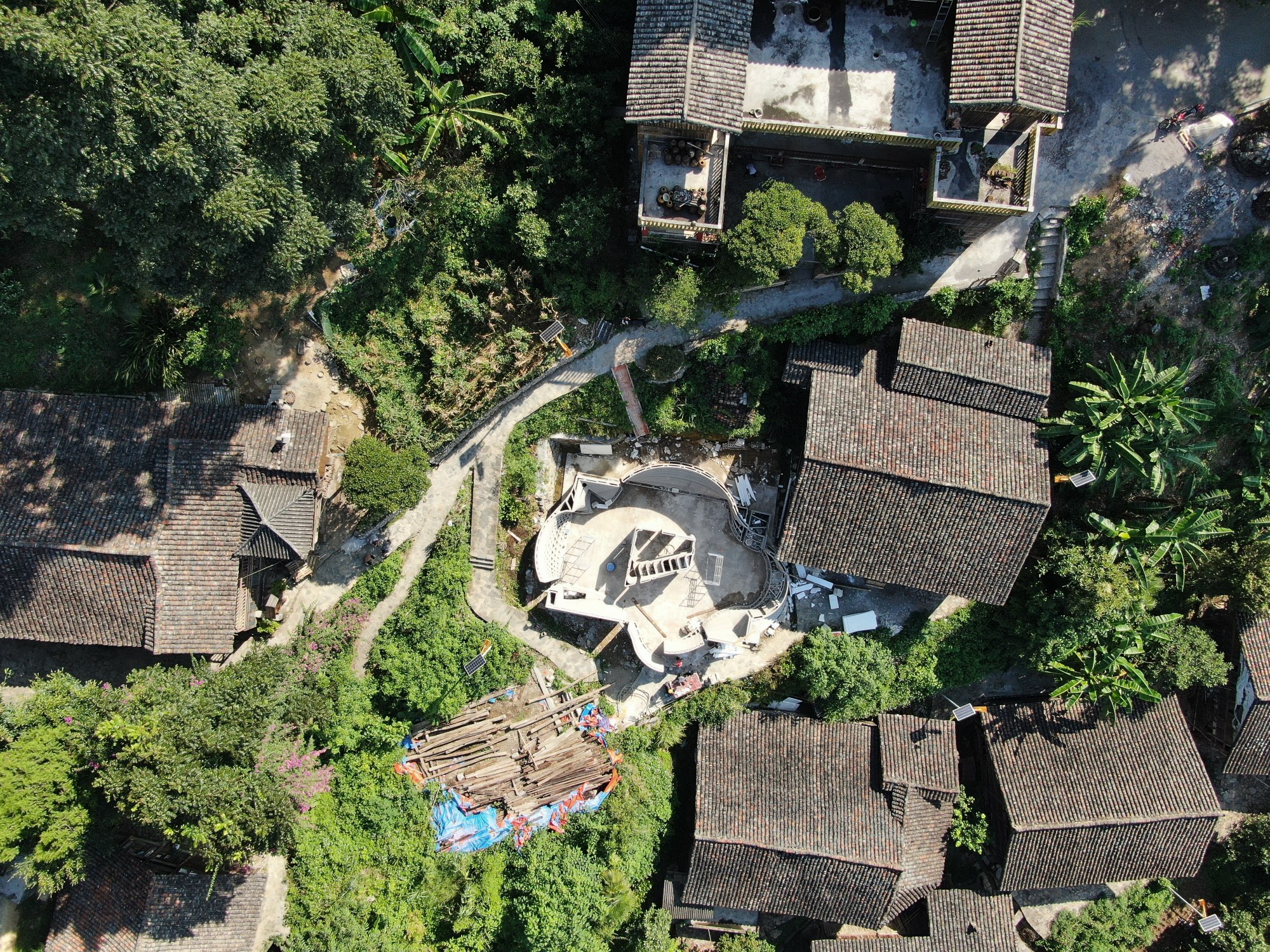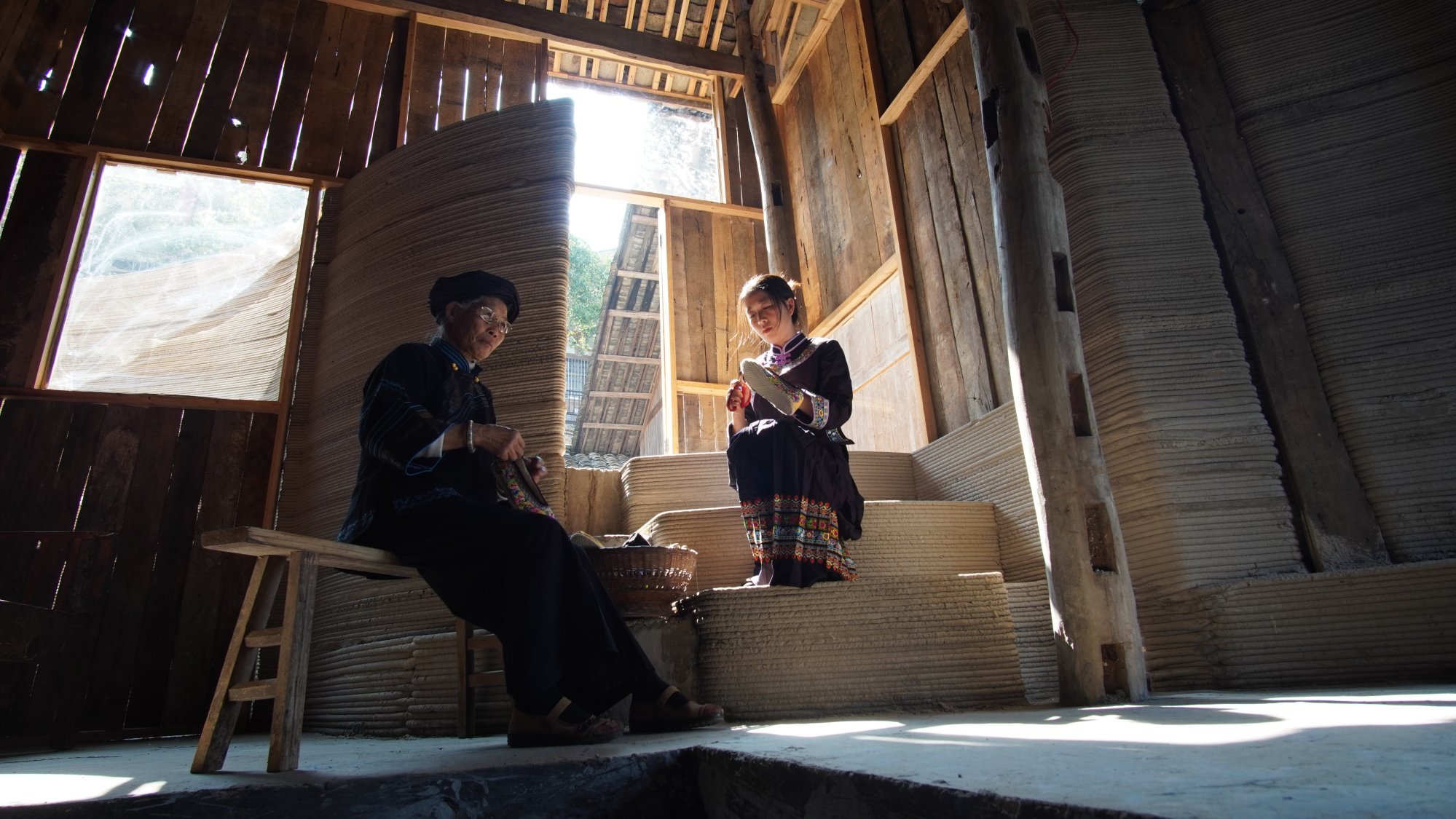
How 3D printing combined with traditional Chinese wooden construction is helping resurrect a century-old village in rural China
- A University of Hong Kong team is helping give new life to abandoned houses as part of revitalisation plans for Nanlong village in Guizhou province
- For the first house to be transformed, concrete additions 3D-printed on-site allowed for the accommodation of new rooms and a second floor
Who would have thought that 3D printing technology could work hand in hand with traditional wooden construction to kick-start the resurrection of a century-old village in rural China?
Architects John Lin Chun-han and Lidia Ratoi, professor and assistant professor, respectively, in the department of architecture at the University of Hong Kong (HKU), explored the potential of such an unlikely marriage and came up with what they call “The Traditional House of the Future”.
The project is part of revitalisation plans for Nanlong village, in the country’s southwest Guizhou province, where hundreds of dilapidated wooden houses have been abandoned.
The pooling of Lin and Ratoi’s areas of expertise – Lin’s as a founding partner of Rural Urban Framework (RUF), a non-profit enterprise within HKU, and Ratoi’s in robotic fabrication and material sustainability – was, like so many recent innovations, a product of the pandemic.
Hong Kong at Venice 2023: how sustainable design can shape city’s future
“As Year 2 architecture teachers, we’d received funding to take students to engage in a real-life project in mainland [China],” Lin says. “But Covid restrictions meant we couldn’t travel, and the three-year deadline for the funding was approaching.”
A discussion ensued about combining Lin’s research on how houses in rural China are being transformed as more people move back from the cities, with Ratoi’s research on reusing Hong Kong food and construction waste as biomaterials for robotic fabrication.

The result is an adaptive reuse experiment they believe to be the first of its kind.
Chinese ancestral villages houses are like modern-day kit homes, built using mortise and tenon joints that can be easily assembled and disassembled, making them ideal for the experiment, Lin says.
They chose one house in Nanlong village that, typically for its era, had been built using local timber, without any steel fastenings. This prototype structure, which also accommodated animals, lacked an indoor bathroom and had only rudimentary cooking facilities.
Eye-opening. Museum-like. A trio of hotels in Japan marry design and nature
Between November 2020 and January 2023, a plan was drawn up to dismantle the original timber house piece by piece and rebuild it on the same site with concrete additions – an entrance courtyard, planting area, balcony, kitchen and bathrooms – that would be 3D-printed on site.
“We scanned the entire house – all the crooked columns, all the imperfections that come from working with natural material that alters over time are incorporated into the 3D-printing language.”

She adds that the concrete additions allowed for the accommodation of those new rooms and a second floor.
The HKU team created a model for local carpenters on-site to follow, while Shenzhen-based Professor Xu Weiguo, head of the architecture department at mainland China’s Tsinghua University, provided the 3D printing using robotic arms on site.
For members of the Miao and Dong ethnic minorities, construction of this type of housing knitted the community together, Lin says. Fittingly, the reconstruction was also a team effort.
A human production line of neighbours, both men and women, passed components from one to the other. Village children played nearby while elders cooked communal food. Meanwhile, a concrete mixture was pumped into the 3D printer, mounted on a robot and manned by a technician on the ground.

As with any build, changes to the original plans had to be made along the way, leading to interesting realisations about the unorthodox pairing of conventional and cutting-edge construction.
“Large-scale 3D printing is much like a traditional craft, as it requires a skilled technician to work alongside the machine and continuously observe real-life processes, constantly augmenting things such as printing speed, the composition of the material, or when to start and stop printing,” Ratoi says.
“For example, going too high too fast may result in a collapsed wall.”
The experiment also showed the versatility of Chinese traditional houses and those who build them.
A lot of younger people are moving back [to villages in China], opening small hotels and shops, or running online businesses
Lin says he can’t recall any other project that has taken robots into rural areas.
“We are very excited about bringing these two techniques together and want to continue to explore the role of technology in enabling the adaptation of the existing built environment.”
Beyond historical preservation and the clear social, cultural and environmental impacts, the project tests a potential new model of contemporary housing.
Decades after an economic exodus saw villagers leaving their homes in droves to work in cities, that trend is now reversing.
“A lot of younger people are moving back, opening small hotels and shops, or running online businesses,” Lin says. “Villagers who are still farming may also be making additional income from internet commerce.”

Traditional village housing might not meet contemporary needs, he continues, but neither does modern cookie-cutter construction built for low cost and speed.
“Our prototype encapsulates the realities of a rapidly changing lifestyle, at the intersection between traditional and modern, neither rural nor urban,” Lin says, adding that the cost would be similar to that of building a concrete frame and brick in-fill house.
Ratoi says that in proposing strategies for recycling and revitalising vernacular houses, the project questions how technology can act as a social potentiator and become a means to strengthen local and cultural building practices.
How 3 Hong Kong flats on 2 levels became 1 with over 5,000 sq ft of space
“The iterations possible with 3D printing are endless,” she adds, enabling homes to be customised to individual needs without incurring additional expense.
A family has moved into the new home and Lin and Ratoi will review the results one year on. They say that, in the future, the government is considering applying the Traditional House of the Future as a strategy for commercialising the village by creating guest houses for tourists.
For now, though, the researchers are hoping to attract investors interested in funding similar restorations in other places in China.

